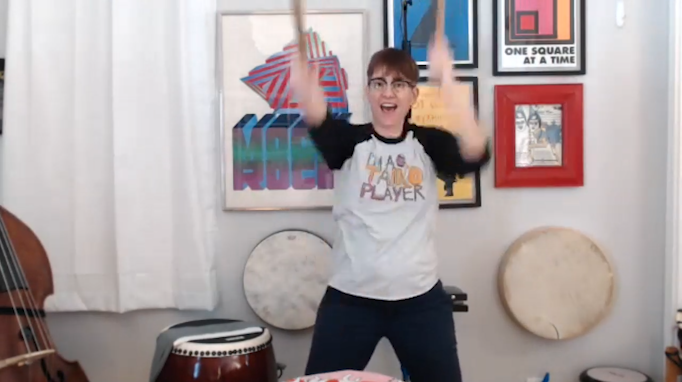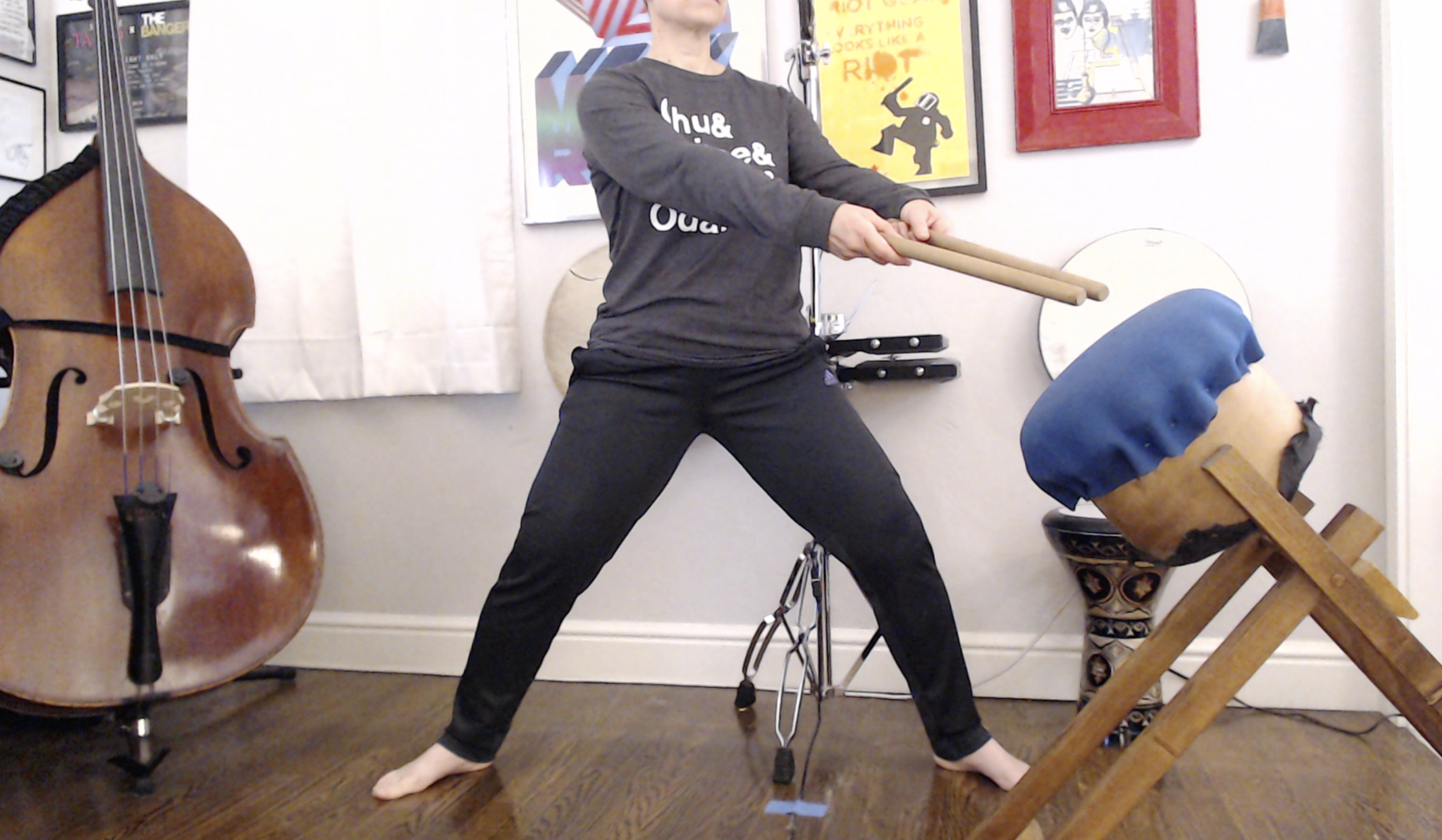Nonsense songs are a great way to introduce the concept of syllables corresponding to rhythms, the way they do with kuchishoka. We’ve created several for our kid’s Taiko Zooms, and my favorite is Pop Tarts Ducky Face. It’s good for ages 4 - 8(ish), depending on how you use it. It’s written out here in kuchishoka and western notation, and I demonstrate it twice in the video. First, I show how it works on drums, then I show one way it can be done with body percussion if you and/or your students can’t access instruments.
To introduce this to 4-6 year olds, the script goes something like this:
Now we’re going to learn a fun new song! Everybody listen. (Do the song) Ok, that was it. Listen again, and pay attention to what I do with my bachi and hands when I say Quack. (Do the song) Did you notice? This next time, do that movement with me. (Do the song, kids copy your movement) Great job! Now, this next time, do that movement with me and say Quack when I say it. (Do the song) Way to go! Okay - this last time, do the Quack with me and also do the Boom! (Do the song) Nice work everybody!
This takes about 2 minutes, which is an attention-span friendly amount of time for these ages. Next class, do it again, and encourage kids to play or clap along, or to say more of the words. You can come back to it for many classes, building on it each time, but don’t spend more than a couple of minutes on it in a class.
With kids age 7-8, you can spend 5-10 minutes on an activity before it’s time to move on; your first step is to demo the whole thing, then follow the “First me/Now you” method to teach it. Once students have it, play it all together a few times. You can have them rotate between drums in between repetitions if they need more challenge. With especially advanced groups, teach them the body percussion version, and then have them build their own body percussion phrases to go along with the words.
Kids LOVE this activity, and it works in both virtual and in-person classes. Let me know if you try it - I’d especially love to hear about any modifications you make! - and happy teaching!

























